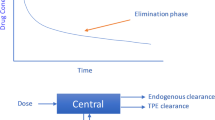Abstract
Venovenous extracorporeal membrane oxygenation (VV-ECMO) is a life-saving therapy for critically ill patients, but it carries an increased risk of thrombosis due to blood interacting with non-physiological surfaces. While the relationship between clinical variables and thrombosis remains unclear, our study aimed to identify which factors are most predictive of thrombosis. The Extracorporeal Life Support Organization Registry was queried to obtain a cohort of VV-ECMO patients aged 18 years and older from 2015 to 2019. Patients who were over 80-years-old, at the extremes of weight, who received less than 24 h of ECMO, multiple rounds of ECMO, or had missing data were excluded. Multivariate logistic regression modeling was used to assess predictors of thrombosis and mortality. A total of 9809 patients were included in the analysis, with a mean age of 47.1 ± 15.1 years and an average ECMO run time of 305 ± 353 h. Thrombosis occurred in 19.9% of the cohort, with circuit thrombosis (8.6%) and membrane lung failure (6.1%) being the most common. Multivariate analysis showed that ECMO runs over 14 days (OR: 2.62, P < 0.001) and pregnancy-related complications (OR: 1.79, P = 0.004) were associated with an increased risk of thrombosis. Risk factors for circuit thrombosis included incremental unit increases in the pump flow rate at 24 h (OR: 1.07 [1.00–1.14], P = 0.044) and specific cannulation sites. Increased body weight (OR: 1.02 [1.00–1.04], P = 0.026) and increased duration on ECMO (OR: 3.82 [3.12–4.71], P < 0.001) were predictive of membrane lung failure. Additionally, patients with thrombosis were at increased likelihood of in-hospital mortality (OR: 1.52, P < 0.001). This study identified multiple thrombotic risk factors in VV-ECMO, suggesting that future studies investigating the impact of pregnancy associated complications and ECMO flow rate on hemostasis would be illuminating.



Similar content being viewed by others
References
Makdisi G, Wang IW (2015) Extra Corporeal Membrane Oxygenation (ECMO) review of a lifesaving technology. J Thorac Dis 7(7):E166–E176. https://doi.org/10.3978/j.issn.2072-1439.2015.07.17
Organization ELS (2022) ECLS Registry Report International Summary 2022. https://www.elso.org/registry/internationalsummaryandreports/internationalsummary.aspx
Abruzzo A, Gorantla V, Thomas SE (2022) Venous thromboembolic events in the setting of extracorporeal membrane oxygenation support in adults: a systematic review. Thromb Res 212:58–71. https://doi.org/10.1016/j.thromres.2022.02.015
Combes A, Hajage D, Capellier G et al (2018) Extracorporeal membrane oxygenation for severe acute respiratory distress syndrome. N Engl J Med 378(21):1965–1975. https://doi.org/10.1056/NEJMoa1800385
Peek GJ, Mugford M, Tiruvoipati R et al (2009) Efficacy and economic assessment of conventional ventilatory support versus extracorporeal membrane oxygenation for severe adult respiratory failure (CESAR): a multicentre randomised controlled trial. Lancet 374(9698):1351–1363. https://doi.org/10.1016/s0140-6736(09)61069-2
Olson SR, Murphree CR, Zonies D et al (2021) Thrombosis and bleeding in extracorporeal membrane oxygenation (ECMO) without anticoagulation: a systematic review. ASAIO J 67(3):290–296. https://doi.org/10.1097/mat.0000000000001230
Nunez JI, Gosling AF, O’Gara B et al (2022) Bleeding and thrombotic events in adults supported with venovenous extracorporeal membrane oxygenation: an ELSO registry analysis. Intensive Care Med 48(2):213–224. https://doi.org/10.1007/s00134-021-06593-x
Treml B, Breitkopf R, Bukumirić Z, Bachler M, Boesch J, Rajsic S (2022) ECMO predictors of mortality: a 10-year referral centre experience. J Clin Med 11(5):1224. https://doi.org/10.3390/jcm11051224
Kohs TCL, Liu P, Raghunathan V et al (2022) Severe thrombocytopenia in adults undergoing extracorporeal membrane oxygenation is predictive of thrombosis. Platelets 33(4):570–576. https://doi.org/10.1080/09537104.2021.1961707
Wu Y (2015) Contact pathway of coagulation and inflammation. Thromb J 13:17. https://doi.org/10.1186/s12959-015-0048-y
Sniderman J, Monagle P, Annich GM, MacLaren G (2020) Hematologic concerns in extracorporeal membrane oxygenation. Res Pract Thromb Haemost 4(4):455–468. https://doi.org/10.1002/rth2.12346
Levy JH, Staudinger T, Steiner ME (2022) How to manage anticoagulation during extracorporeal membrane oxygenation. Intensive Care Med 48(8):1076–1079. https://doi.org/10.1007/s00134-022-06723-z
Organization ELS (2023) Codes for extracorporeal life support (ECLS) complications. https://www.elso.org/registry/supportdocuments/eclscomplicationscode.aspx
Organization ELS (2022) Extracorporeal life support organization (ELSO) registry data definitions. https://www.elso.org/portals/0/files/pdf/elso%20registry%20data%20definitions%2005_17_22.pdf
Kirklin JK, Naftel DC, Pagani FD et al (2015) Pump thrombosis in the thoratec heartmate II device: an update analysis of the INTERMACS registry. J Heart Lung Transplant 34(12):1515–1526. https://doi.org/10.1016/j.healun.2015.10.024
Boyle AJ, Jorde UP, Sun B et al (2014) Pre-operative risk factors of bleeding and stroke during left ventricular assist device support: an analysis of more than 900 heartmate II outpatients. J Am Coll Cardiol 63(9):880–888. https://doi.org/10.1016/j.jacc.2013.08.1656
Chung M, Cabezas FR, Nunez JI et al (2020) Hemocompatibility-related adverse events and survival on venoarterial extracorporeal life support: an ELSO registry analysis. JACC Heart Fail 8(11):892–902. https://doi.org/10.1016/j.jchf.2020.09.004
Wiegers HMG, Middeldorp S (2020) Contemporary best practice in the management of pulmonary embolism during pregnancy. Ther Adv Respir Dis 14:1753466620914222. https://doi.org/10.1177/1753466620914222
Badheka A, Stucker SE, Turek JW, Raghavan ML (2017) Efficacy of flow monitoring during ECMO. ASAIO J 63(4):496–500. https://doi.org/10.1097/mat.0000000000000538
Cushman M (2007) Epidemiology and risk factors for venous thrombosis. Semin Hematol 44(2):62–69. https://doi.org/10.1053/j.seminhematol.2007.02.004
Esmon CT (2009) Basic mechanisms and pathogenesis of venous thrombosis. Blood Rev 23(5):225–229. https://doi.org/10.1016/j.blre.2009.07.002
Ki KK, Passmore MR, Chan CHH et al (2019) Low flow rate alters haemostatic parameters in an ex-vivo extracorporeal membrane oxygenation circuit. Intensive Care Med Exp 7(1):51. https://doi.org/10.1186/s40635-019-0264-z
Funding
This work has been supported by grants from the National Institutes of Health (R01HL101972, R01HL151367).
Author information
Authors and Affiliations
Corresponding author
Ethics declarations
Conflict of interest
J.J. Shatzel reports receiving consulting fees from Aronora, Inc. The Oregon Health & Science University Conflict of Interest in Research Committee has reviewed and managed this potential conflict of interest. The remaining authors declare no potential conflict of interest.
Additional information
Publisher's Note
Springer Nature remains neutral with regard to jurisdictional claims in published maps and institutional affiliations.
Supplementary Information
Below is the link to the electronic supplementary material.
Rights and permissions
Springer Nature or its licensor (e.g. a society or other partner) holds exclusive rights to this article under a publishing agreement with the author(s) or other rightsholder(s); author self-archiving of the accepted manuscript version of this article is solely governed by the terms of such publishing agreement and applicable law.
About this article
Cite this article
Kohs, T.C.L., Weeder, B.R., Chobrutskiy, B.I. et al. Predictors of thrombosis during VV ECMO: an analysis of 9809 patients from the ELSO registry. J Thromb Thrombolysis 57, 345–351 (2024). https://doi.org/10.1007/s11239-023-02909-4
Accepted:
Published:
Issue Date:
DOI: https://doi.org/10.1007/s11239-023-02909-4




